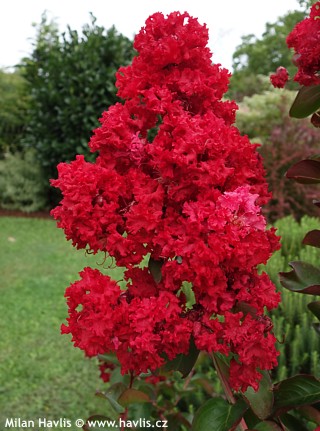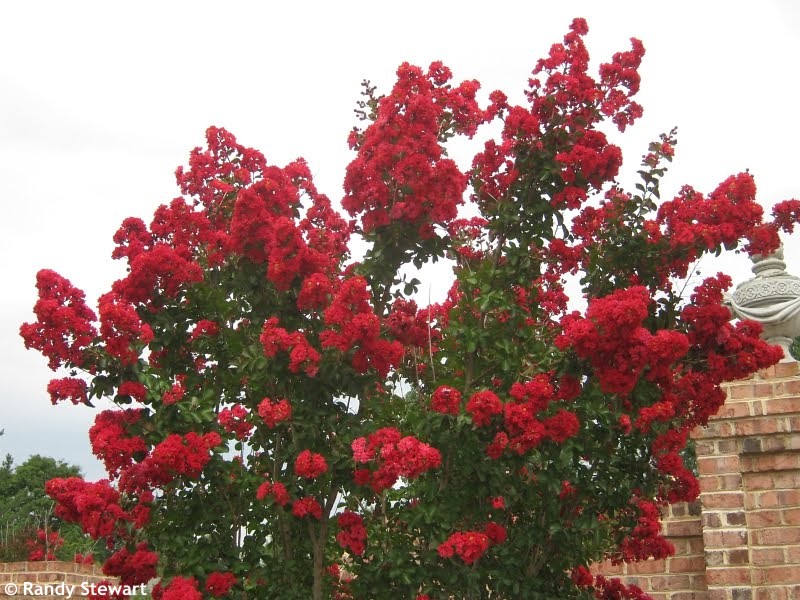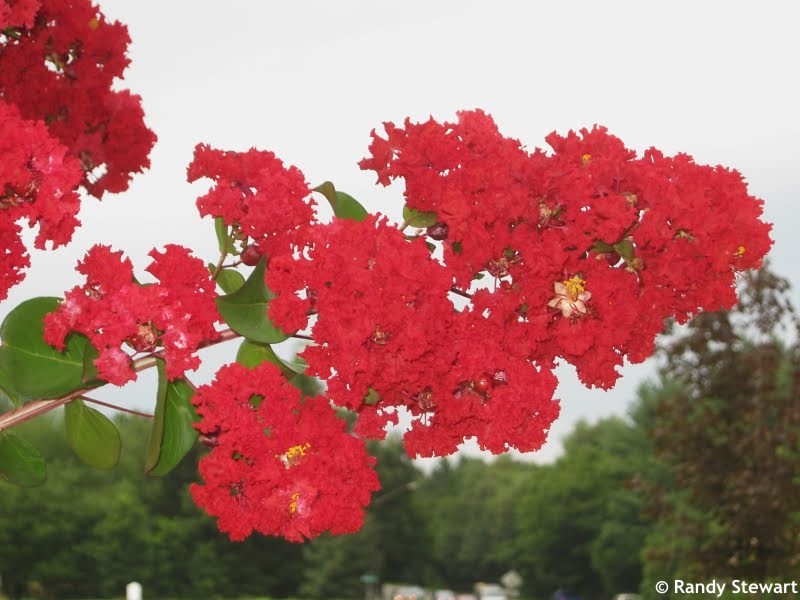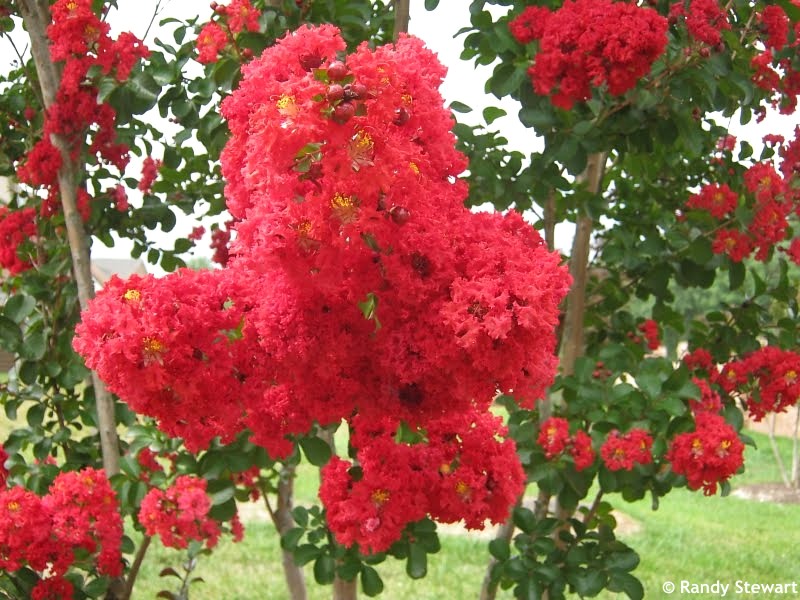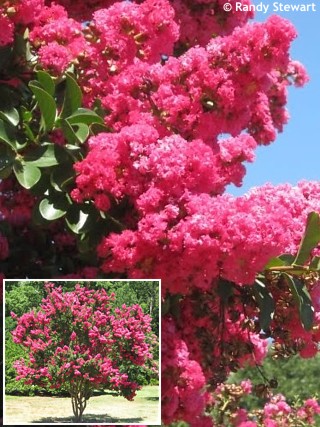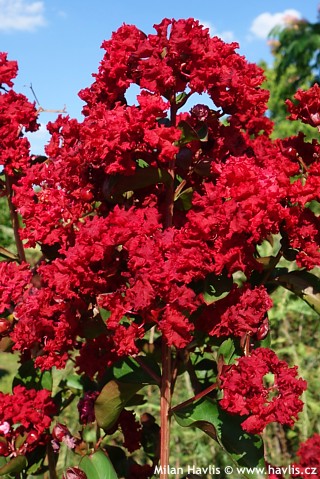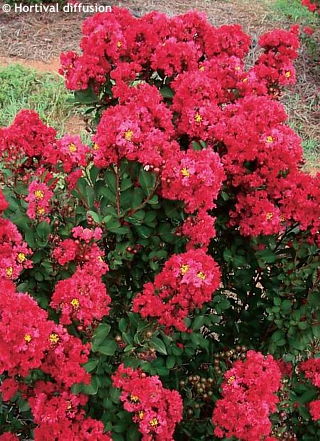Lagerstroemia indica 'Whit II' DYNAMITE® crepe myrtle
Lagerstroemia
Crape myrtle is a flowering shrub or small tree from China. It was first introduced to the USA and the UK in the 18th century. The original plant lagerstroemia indica is too tender and not too pretty so breeders were working on further hybridization and the most attractive varieties available now are believed to be results of crossing with l.speciosa and l.fauriei. Far more important news for us is the fact that among those finished plants were selected others that survived lower temperatures than what was common in the areas of natural habitat so we have a few myrtles that can grow even in our climate. Some were selections, other consequent hybrids.
Carl Whitcomb is one of the most important breeders of crepe myrtles with exceptional features, of which we particularly appreciate increased hardiness. He owns and runs a research station Lacebark Inc. in Stillwater in Oklahoma, USA, whose USDA zone is the same as warmer parts of Central Europe (7a), which offers great potential for our climate. He has been breeding crepe myrtles for over 40 years, and his very first patented success named ‘Whit I’ dates back to 1996. He created a series called Oklahoma Tough® which manifests the hardiness of his plants – it often reaches as low as -25 °C (root-hardy). He does not exclusively crossbreed hybrid varieties, but mostly proven varieties of the botanical species l. indica using ethyl methane sulfonic acid methyl ester (EMS), which can penetrate DNA and cause mutations, resulting in significant quality changes in the new generations. Carl Whitcomb focused on selecting those with, in addition to improved beauty, better health and flower sterility which makes possible repeat flowering without exhausting the plant with seed production.
DYNAMITE® is one of the reddest crepe myrtle varieties currently known to trade. It belongs to the Play It Again® series which comprises of varieties with double flowering on the same panicle and in a few cases also dark foliage as a bonus. The inflorescence of DYNAMITE® is a large (30x20 cm), upright panicle. Individual flowers are of the richest red shade you may have seen and open one by one from late July or early August (depending on summer quality). Once the first flush is almost over, new flower buds appear on the same panicle and, since they are sterile and do not produce seeds, they start blooming in no time. Flowering then lasts until the last sunny and warm days of autumn if the plant is well fed.
Leaves are deciduous, almost leathery, oval, maroon when they emerge, and deep green soon after. In acid soil they gain fantastic fiery red and orange shades in autumn. After they have fallen down older plants reveal flaking-off bark, similar to what plane trees or stewartias do, leaving a mosaic pattern on the smooth trunks. DYNAMITE® crepe myrtle was granted a US patent No. PP10,296 in 1996.
Crepe myrtles naturally form V-shaped shrubs or multi-stemmed trees. You can leave them to their own devices or train them into a spectacular multistems: when your plant reaches a height of around two meters you can start removing lateral branches from the lower parts to shape it into an elegant multi-stemmed tree. Mature trunks produce a beautiful pattern similar to that on planetrees, with several shades of brown, green, and beige. When the trees shed leaves and trunks become bare the display of these coloured trunks of crepe myrtles is usually the best.
Crepe myrtles need little care. They need full sun with zero shade during the day. Grow them in well-drained soil that should be kept moist before the plant is fully established. If cultivated in acidic soil the plant will make fabulous colour play of autumn foliage. Crape myrtle needs heavy mulching in winter and some mulch in summer to retain moisture. Fertilize it in spring to encourage growth (nitrogen-based fertilizers), and in summer to encourage flowering (phosphorus-based fertilizers). DYNAMITE® is wood-hardy to about -21°C (USDA zone 6b), and root-hardy to almost -25 °C.
Last update: 25-02-2014; 23-09-2023

































